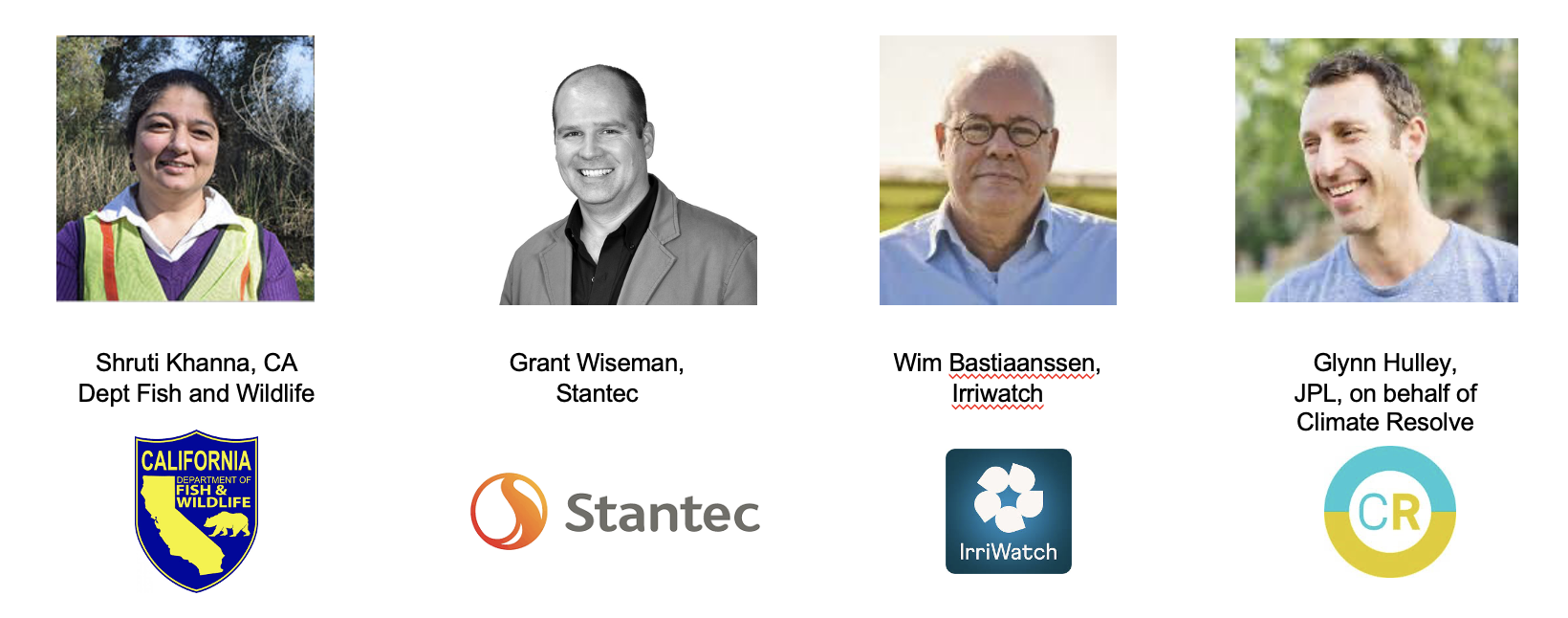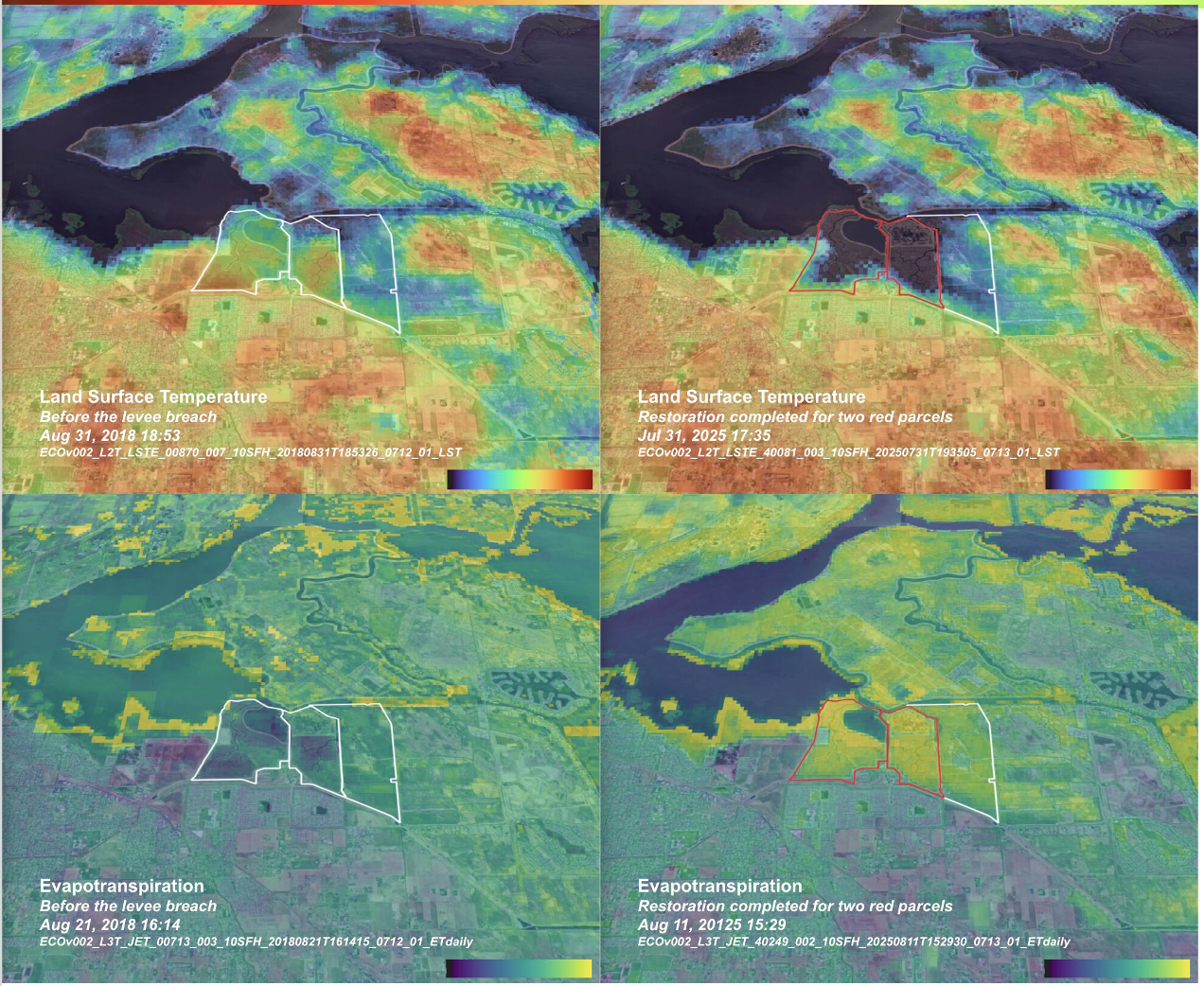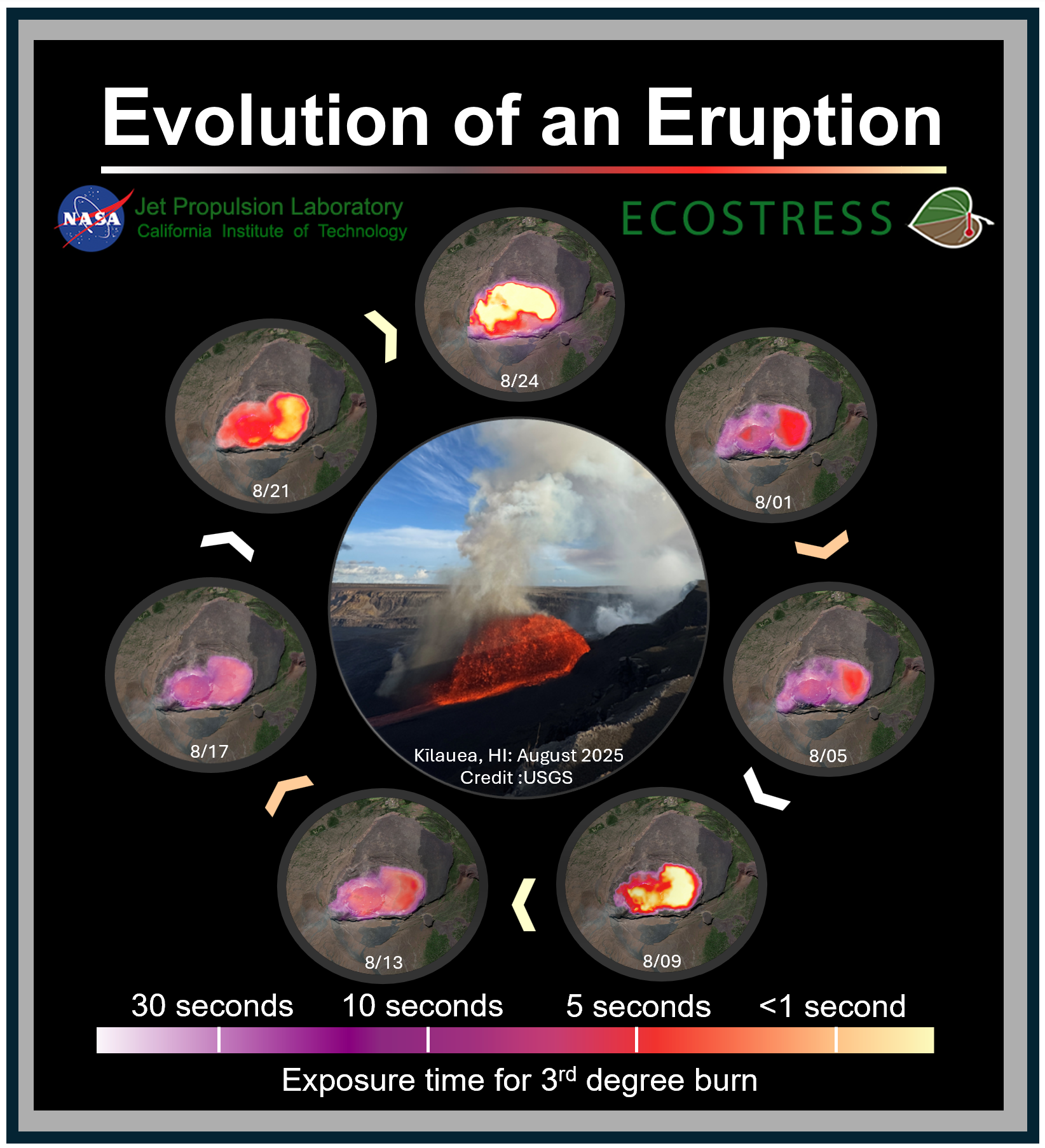ECOSTRESS October Community Updates Digest
ECOSTRESS Science and Applications Team Meeting Overview
The ECOSTRESS Science and Applications Team meeting was successfully held as a hybrid event with impressive engagement from the scientific community. Date: September 16-18, 2025. Location: Courtyard by Marriott, Pasadena, CA
Key Statistics:
- 171 participants (hybrid format)
- 34 oral presentations
- 16 posters
- 2 tutorials
- 2 panel events
- Breakout sessions and a hackathon
- 15+ student presentations/posters
- 3+ high school students participated
Collaborative Highlight: Joint session with EMIT featuring 6 talks and a joint poster session, which was very enthusiastically attended.
Applications Panel Recognition
Special thanks to our distinguished ECOSTRESS Applications Panel members:
- Shruti Khanna - California Department of Fish and Wildlife
- Grant Wiseman - Stantec
- Wim Bastiaanssen - IrriWatch
- Glynn Hulley - JPL, on behalf of Climate Resolve

Featured Image Highlights
1. Evolution of a Kilauea Eruption (August 2025)
Led by: Jake Longenecker with student team (Gabriela Dauber, Jesse Chang-Frieden, Julia Brusso, and Quin Meiseles)
This compelling visualization captures a full month of ECOSTRESS coverage during the Kilauea eruption in August 2025. The thermal imaging demonstrates temperature variations based on 70m x 70m pixels, capable of capturing even small lava flows.
2. Agricultural Landscapes: Imperial Valley vs. Mexicali Valley
Led by: Jesse Chang-Frieden
A fascinating comparison of water management practices on both sides of the U.S.-Mexico border. While both the Imperial Valley (Calexico, CA) and Mexicali Valley (Mexicali, BC) rely on Colorado River water, their agricultural landscapes reveal distinct patterns:
- Imperial Valley: vast grid of large, square plots
- Mexicali Valley: patchwork of smaller, irregularly-shaped fields

3. Dutch Slough Tidal Marsh Restoration Project
Led by: Keiko Namura, NASA Ames Research Center
ECOSTRESS data reveals dramatic differences between restored and non-restored marsh areas:
- Clear Land Surface Temperature contrasts
- Evapotranspiration lower before restoration, higher after
- Restoration shifts the ecosystem from water-limited to energy-limited conditions
- Enhanced plant transpiration post-restoration

Recent ECOSTRESS Publications
Five significant publications demonstrate the breadth of ECOSTRESS science and applications:
- Zeng et al. (2025) - "Riding through the heat: Assessing heat health risk of cycling based on diurnal temperature and shared-bike big data" | Applied Geography
- Diehl et al. (2025) - Published in Environmental Research Letters
- Sankey et al. (2025) - "ECOSTRESS-derived semi-arid forest temperature and evapotranspiration estimates demonstrate drought and thinning impacts" | Remote Sensing in Ecology and Conservation
- Alnajjar et al. (2025) - "A Multidimensional Approach to Mapping Urban Heat Vulnerability: Integrating Remote Sensing and Spatial Configuration" | Smart Cities
- Zhu et al. (2025) - "Rising Environmental Inequalities and Their Relationship to Racial and Socioeconomic Disparities in the US Southwest" | Environmental Science & Technology
Summary
The ECOSTRESS team meeting showcased exceptional scientific collaboration, innovative applications of thermal imaging technology, and strong engagement from the next generation of researchers. The joint session with EMIT and the diverse range of presentations highlighted the mission's growing impact across multiple scientific disciplines.
For more information about ECOSTRESS data and applications, please contact the ECOSTRESS team at JPL. More info about the project can also be found at ecostress.jpl.nasa.gov.

